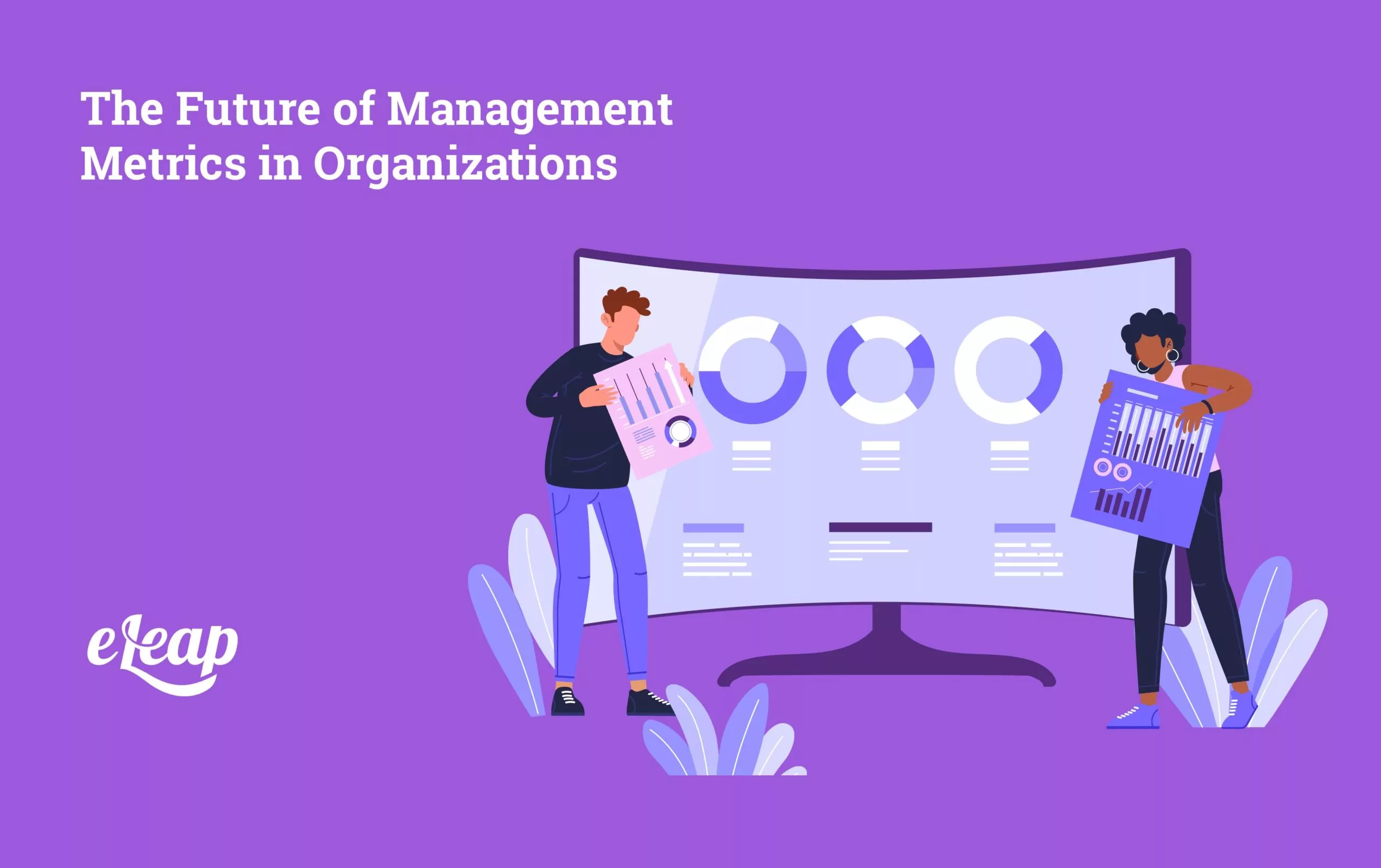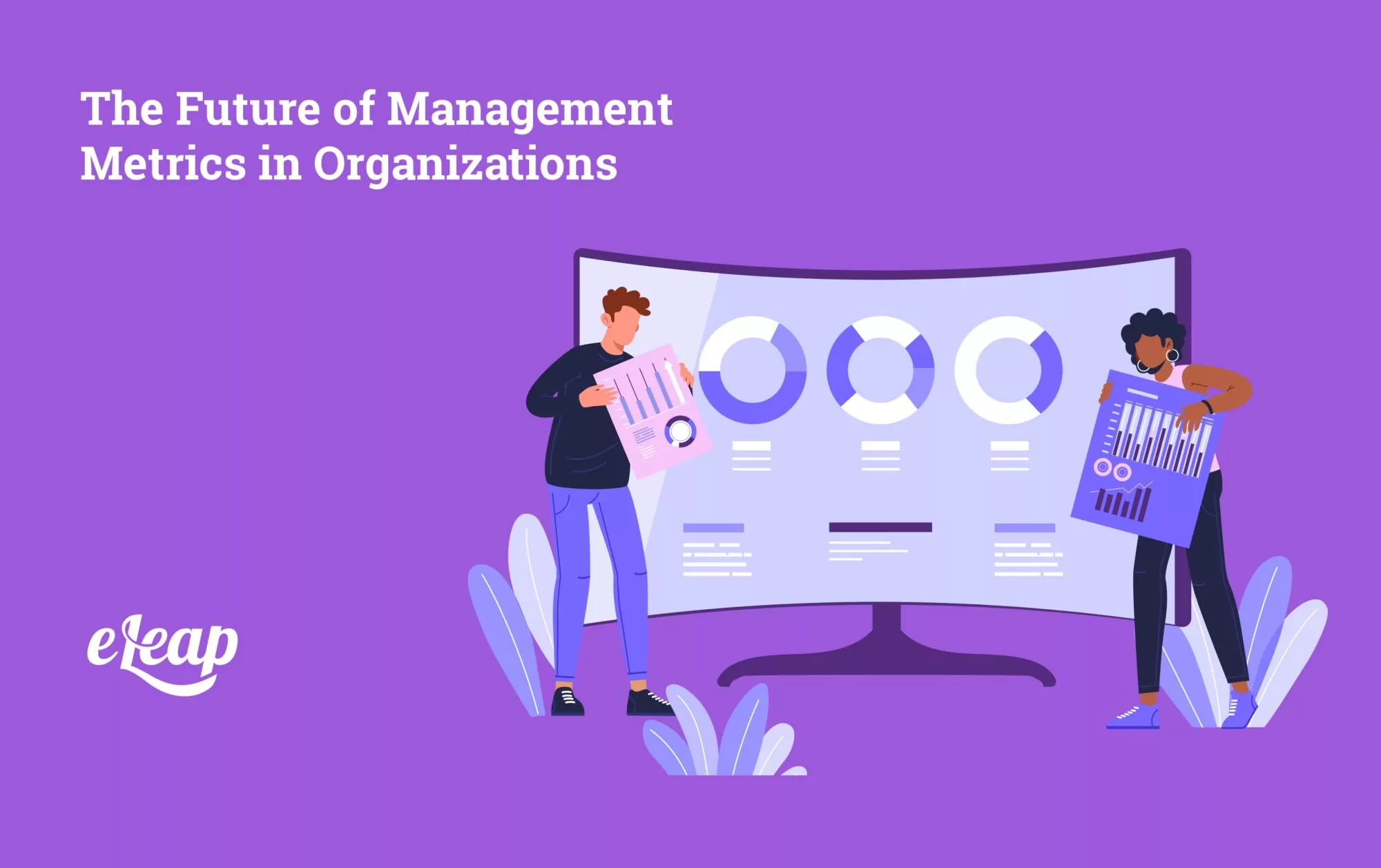The Future of Management Metrics in Organizations

In the fast-paced world of modern business, organizations continuously evolve their methods of measuring success and performance. Management metrics have become crucial in guiding decision-making, aligning teams with organizational goals, and driving overall business performance. Thanks to advancements in technology and the growing importance of data-driven strategies, the role of management metrics is becoming increasingly sophisticated as businesses move forward. Explore how eLeaP®’s Performance Management Platform can simplify evaluations, boost productivity, and drive measurable results.
This article explores the future of management metrics, focusing on emerging trends, challenges, and best practices for organizations seeking to stay ahead.
Understanding Management Metrics and Their Role in Organizations
Definition of Management Metrics
Management metrics are quantifiable measures organizations use to track, assess, and manage the performance of various functions, departments, and teams. They serve as key indicators that reflect an organization’s health, operational efficiency, and ability to meet strategic goals. From financial performance to employee engagement, the scope of management metrics is vast and plays a pivotal role in guiding business decisions.
Why Management Metrics Are Crucial in Today’s Business Landscape
The increasing reliance on data in decision-making has led to a surge in the importance of management metrics. These metrics give businesses the insights to make informed choices, optimize operations, and adapt to market changes. Metrics are no longer just numbers on a report; they serve as actionable insights that can drive improvements across every aspect of a business.
Organizations that leverage the power of well-defined management metrics are more likely to achieve greater efficiency, boost employee performance, and create strategies that lead to long-term growth.
Core Management Metrics Every Organization Needs to Track
Financial and Operational Performance
Financial metrics are often the first point of focus for most organizations. These metrics include revenue, profit margins, return on investment (ROI), and operating expenses. However, operational metrics, such as production efficiency, supply chain performance, and cost-per-unit measures, also play an integral role in maintaining the balance between profitability and operational excellence.
Organizations must ensure that they track financial and operational metrics simultaneously, as they are often interdependent. For example, increasing production efficiency may decrease operating costs, ultimately boosting profitability.
Employee Engagement and Productivity Metrics

In today’s competitive business environment, employee engagement has become critical to an organization’s success. Metrics such as employee satisfaction, retention rates, and engagement scores help businesses assess how well they foster a positive work culture.
Employee productivity metrics are equally important as they track the output of individuals or teams against established goals. Measuring employee performance and engagement is crucial for organizations looking to optimize talent management, improve retention, and enhance overall productivity.
Customer-Centric Metrics
Customer satisfaction, Net Promoter Scores (NPS), and customer lifetime value (CLV) are just a few examples of customer-centric metrics organizations should monitor. These metrics help businesses assess the effectiveness of their customer service, understand customer needs, and identify opportunities for improvement.
With the increasing importance of customer-centric business models, organizations must make customer satisfaction a key component of their performance measurement systems. These metrics help build long-term relationships with customers and contribute to strategic decisions related to product development, pricing, and marketing.
Trends Shaping the Future of Management Metrics
Artificial Intelligence and Automation in Metrics Collection
The future of management metrics will be heavily influenced by the integration of Artificial Intelligence (AI) and automation. AI can automate the collection and analysis of data, enabling businesses to gather insights faster and more accurately. Machine learning algorithms can also help predict future trends, making it easier for organizations to forecast potential challenges and opportunities.
Automation can reduce the human effort involved in collecting and processing metrics, allowing businesses to focus on interpreting results and making decisions based on real-time data. As technology advances, AI will likely become a more prominent tool in the management metrics space.
The Rise of Real-Time Analytics
The future of management metrics will shift towards real-time analytics. With advancements in cloud computing and data storage solutions, organizations will have access to metrics and insights as they occur. Real-time data allows businesses to make quick decisions, address issues promptly, and capitalize on opportunities as they arise.
For example, tracking sales performance, employee productivity, and customer satisfaction in real-time allows managers to take corrective actions immediately, improving operational efficiency and customer service. Real-time metrics will become vital for businesses that want to stay agile and responsive.
Challenges in Adopting and Implementing Effective Management Metrics
Overcoming Data Overload and Ensuring Accuracy
One of the most prominent challenges organizations face when implementing management metrics is data overload. With so much data available, knowing which metrics are most important for achieving organizational goals can be complex. Organizations must avoid drowning in irrelevant data and focus on collecting and analyzing metrics that provide actionable insights.
Data accuracy is another challenge. Inaccurate data can lead to misguided decisions, undermining the effectiveness of the entire metrics system. Therefore, organizations need to ensure that data collection processes are rigorous and reliable so that decisions can truly impact performance.
Resistance to Change: Overcoming Organizational Barriers
Another challenge in adopting management metrics is resistance to change, particularly when organizations are asked to embrace new technologies or processes. Leadership must address these barriers by clearly communicating the benefits of management metrics and ensuring that all stakeholders are on board with the transition. This process includes training staff on how to use new tools and fostering a culture that embraces data-driven decision-making.
Finding the Right Balance Between Quantitative and Qualitative Data
Quantitative data (such as sales figures and productivity rates) is essential, while qualitative, such as employee feedback and customer testimonials, provide context and depth to the story. Finding the right balance between these two data types is necessary to create a comprehensive performance view. Organizations should strive to incorporate both types of data into their decision-making processes.
Best Practices for Implementing Future-Proof Management Metrics
Aligning Metrics with Long-Term Organizational Goals
For management metrics to be effective, they must align with the organization’s broader goals. Metrics should not just be a set of random numbers; they must reflect the company’s vision and mission. Organizations can ensure that metrics align with strategic goals and that their measurement systems support long-term success.
Leveraging Technology and Tools for Seamless Metric Integration
The future of management metrics relies on the effective use of technology. Tools and platforms like eLeaP make it easier for organizations to collect, analyze, and act on metrics in real time. Cloud-based platforms allow businesses to integrate their metrics systems with other parts of their organization, ensuring data is accessible and actionable at all levels.
Involving Stakeholders in Metric Selection
When implementing management metrics, involving key stakeholders across departments is crucial. Collaboration with leadership, managers, and employees ensures that the tracked metrics reflect the priorities and challenges faced by all levels of the organization. Involving stakeholders fosters a sense of ownership and helps ensure the metrics are meaningful and relevant.
Continuous Review and Adaptation of Metrics
The business environment is constantly evolving, and so must the metrics used to measure performance. Organizations should regularly review and adapt their management metrics to align with current goals, challenges, and industry standards. Continuous review helps to ensure that the metrics system remains relevant and effective in guiding the organization forward.
The Benefits of Modernizing Your Management Metrics System
Improved Decision-Making and Strategy Formulation
Organizations that use modern management metrics are better equipped to make data-driven decisions. Using real-time analytics and AI-driven insights, businesses can identify trends, forecast future challenges, and make informed strategic choices. This stage leads to more effective decision-making, ultimately driving growth and success.
Boosted Productivity and Operational Efficiency
By tracking operational and employee performance metrics, businesses can identify areas for improvement and optimize their workflows. Improving productivity and operational efficiency are key benefits of implementing a robust management metrics system.
Greater Employee Satisfaction and Retention
Management metrics focusing on employee engagement and satisfaction help organizations create positive work environments. These metrics allow businesses to identify and address employee morale, job satisfaction, and retention issues, leading to a more motivated and loyal workforce.
Conclusion
In conclusion, the future of management metrics is exciting. AI, real-time analytics, and employee-centric measures are transforming the ionizations track performance. By aligning metrics with organizational goals, overcoming challenges, and embracing new technologies, businesses can position themselves for long-term success.
As management metrics evolve, organizations adopting future-proof strategies will have a significant competitive advantage. Whether leveraging advanced technology like eLeaP or continuously reviewing their metric systems, organizations must be proactive in adapting to the changing landscape of performance measurement.
The journey ahead involves harnessing the power of data to make smarter decisions, improve efficiency, and foster a culture of growth and innovation. By embracing management metrics’ future, organizations can unlock their full potential.